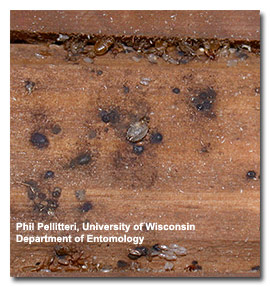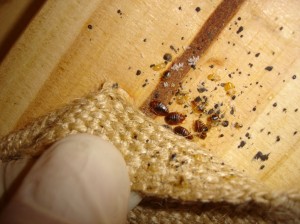

First of all, bed bugs are small, flat, and adept at squeezing themselves into tiny spaces. They can hide in places we'd never think of looking for them, like behind loose wallpaper or under electrical switch plates. To successfully eliminate an infestation, you've got to find and kill every viable bed bug, which is not an easy task.
Second, bed bugs multiply quickly. A single female can lay 500 eggs during her life, and within a few months her offspring can reproduce as well. A few individuals introduced to a new environment can increase exponentially. Depending on conditions, bed bugs can produce 3 or 4 generations in one year. Additionally, bed bugs reproduce most quickly in temperatures between 70*deg; and 82*deg; F, right in the range where most people keep their thermostats.
Bed bugs can go a remarkably long time without feeding, should no host be present to provide them with needed blood meals. Scientists have documented adult bed bugs living up to 550 days without eating, and nymphs may last for months. So simply leaving an infested dwelling unoccupied for a few months in hopes of starving them out will do nothing to discourage the little freeloaders.
Just to make their extermination more difficult, bed bugs can sense chemical odors, and may avoid areas where cleaning agents or even pesticides have been applied. Some scientists believe bed bugs have developed a resistance to certain insecticides as well.
Finally, to rid a dwelling of bed bugs for good, every possible hiding place must be cleaned or treated. In a home, that means all clothing, bedding, linens, and other washable fabrics must be laundered, usually repeatedly. Every crevice and seam of mattresses and upholstered furniture must be inspected and treated. Cracks in walls must be sealed, loose wallpaper reattached or removed, and carpets treated and vacuumed. Dresser drawers have to be emptied and cleaned, and all clutter must be removed to limit hiding places for stray bed bugs.











